#coleus scutellarioides flower
Explore tagged Tumblr posts
Text
Flowering Nettles

Painted Nettle (Plectranthus scutellarioides) flowering in the Gardens by the Bay. Photo credit: Jonathan Chua.
This was taken two years back in a quieter spot of the Gardens by the Bay. We might’ve probably missed it but we didn’t see them when we visited the same spot recently.
#photographers on tumblr#coleus#flora fauna#flora photography#flower pics#nikon photography#nikon zfc#painted nettle#Plectranthus scutellarioides#tamron 16-300mm
24 notes
·
View notes
Text

Coleus scutellarioides 'Flamethrower' / 'Flamethrower' Coleus at the Sarah P. Duke Gardens at Duke University in Durham, NC
#Coleus scutellarioides 'Flamethrower'#Coleus scutellarioides#Coleus#Flamethrower coleus#Flowers#Foliage#Nature photography#photographers on tumblr#Sarah P. Duke Gardens#Duke Gardens#Duke University#Durham#Durham NC#North Carolina
0 notes
Text
Coleus scutellarioides
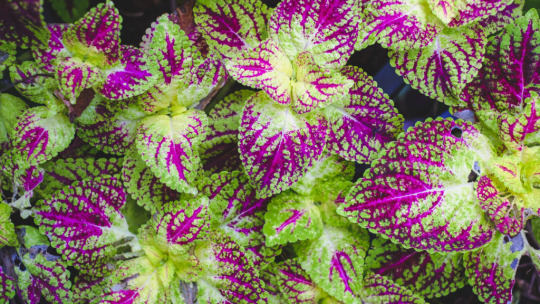
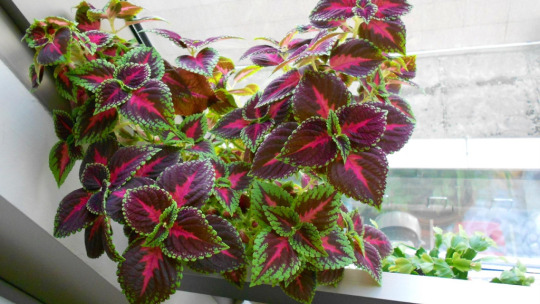
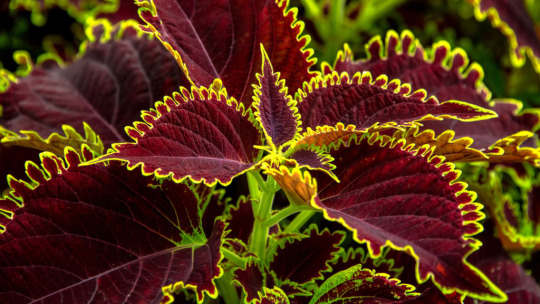
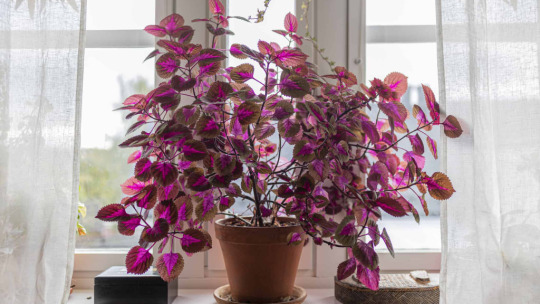
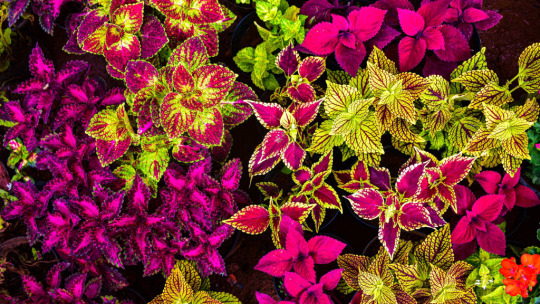

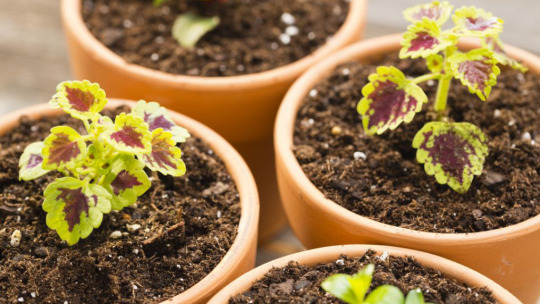
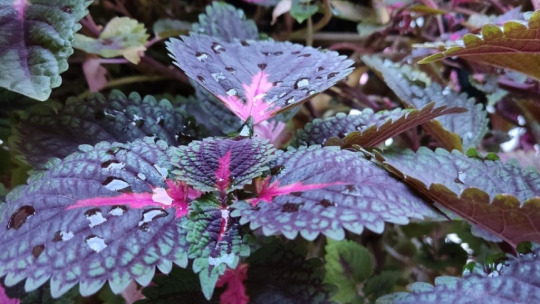
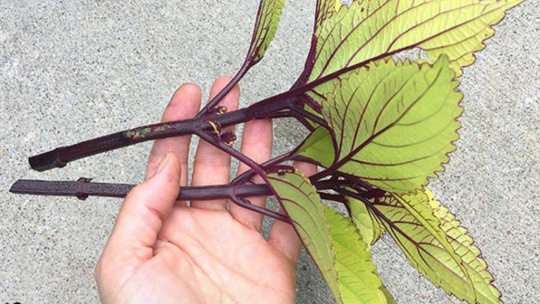
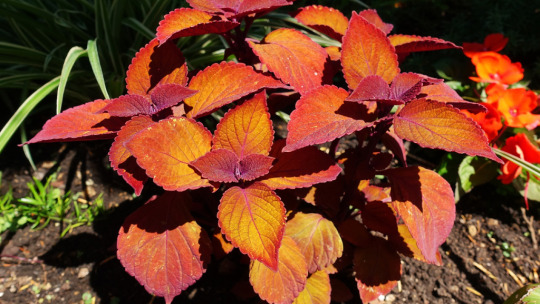
#Coleus Green with pink#This variety has bi-colored foliage with pink centers surrounded by green margins#coleus green with pink -coleus leaf#Coleus Painted Nettle#It is a chocolate brown variety with pink painting colors in the middle of the leaves.#coleus painted nettle -coleus leaf#Plant Care#Soil#These indoor coleus plant loves to grow in rapidly-drained soil of any range but well-drained soil is preferred to avoid root rot & congest#coleus scutellarioides soil#Watering#Application of water to this plant only when the top inch of soil dries & plant begins to wilt. Overwatering leads to root rot & death.#indoor coleus plant watering-coleus leaf#Sunlight#The indoor ornamental plants are shade-loving plants. Indoor coleus enjoys indirect sunlight. But the leaf color is achieved through the di#evening sunlight#or under a shade net.#indoor ornamental plants sunlight-coleus leaf#Flowers#This plant bears a lavender-colored spike of flowers. Pinching the flowers helps the plant to grow faster & bushy.#coleus scutellarioides flower#Propagation#Easily propagated through stem cuttings. Just trim the base of the cuttings & allow the top leaves alone.#coleus leaf cuttings#Repotting#Transfer the plants to new bigger size pots when the coleus plants are found to be root bound over the drainge holes. Avoid placing the ind#coleus leaf plant repotting#Pinching#This is the most important practice in Coleus plant care. Regularly pinch off the cuttings from the top growing ends to promote more branch#coleus indoor plant pinching-coleus leaf
0 notes
Note
You each have an opportunity to add one type of flora/fauna to the setting, whether it lives in a place we’ve seen (mojave, commonwealth) or something you’ve imagined this area would be like (pacific northwest, florida) what critter/plant would you choose? 🫣
Answers below the cut!
Vance_Vampire: the Turkeys in 76 should really be in 4.
Findabair: Plant: Plectranthus scutellarioides, better known as Coleus. Critter: Capybara or Tapir
RurinGas: A very complicated question... Well, I'm naturally going to be a big ol shameless self-promoter and say that if I could add any Critter to the setting, it'd be a Kraken. I mean think about it, lots of the stuff that lives in the Mariana Trench already looks like a horribly irradiated monster, imagine how they'd look post radiation? The sea is probably the scariest place in-lore with all the weird stuff theres gotta be in there! Stuff that'd give a Deathclaw Nightmares!
V13Kobold: I'll be stereotypical here and say we need giant mutant snakes. Otherwise, I can't think of specific animals or plants I'd like to see.
MeatServo: I feel like mutated leeches are overdue on the east coast.
Rubbinmahbelly: Radmoose. Take a radstag but make it a moose. That fella would take out deathclaws no problem. Don't mess with moose.
NarratorJack: This is a interesing question, I suppose Cherry Trees since they're my favorite kind of tree. Sure it would be a bit out of place but surely some rich person from pre war times had at least one or two imported in lol
Rimuru_Mayhem: Tristerix aphyllus - it's a fascinating parasite that lives in cacti. Its seeds are dispersed by birds, and if a seed lands close enough to a viable cactus it will send out a feeler that lets it eventually invade the cactus' body. It has a stunning display of red flowers that burst from the cactus skin. Besides, I think the idea of something creeping inside and parasitizing you from the inside out is fascinating! Although it only occurs in certain parts of South America I would love to see it introduced as a sort of counterpart to the Overgrown in 76, maybe having expanded its range into the lower Mojave. Parasites are cool!
KateAces: I’d love to see weeping willows, my fave tree and yet to appear in fallout
AstralAbraxas: Well unfortunately for me, all of my favorite beasts already are in Fallout! But, I'd love to see an adaptation of Axolotl gulpers that aren't as wretchedly disgusting as they are in the tv show! I want to see a cute little critter, I want to tame one!
4 notes
·
View notes
Photo

Holmskioldia, the Chinese hat
The Chinese hat, Holmskioldia sanguinea, is often mistakenly called "Japanese bougainvillea" in Tahiti because it bears a vague resemblance to bougainvillea.
The vernacular names of this plant are "Chinese hat", "cup and sauce boat" or "umbrella flower" in reference to the funnel shape of its calyx (the set of sepals). Its botanical name Holmskioldia commemorates the Danish botanist Johan Theodor Holmskiold and the epithet sanguinea means blood, to designate its red flowers.
Holmskioldia is native to the subtropical Himalayas, but is grown as an ornamental plant in many places, in Southeast Asia, Mexico, the West Indies, Hawaii, New Caledonia and Tahiti. It is part of the Lamiaceae family like mint, basil, and old boys (Coleus scutellarioides)
11 notes
·
View notes
Photo
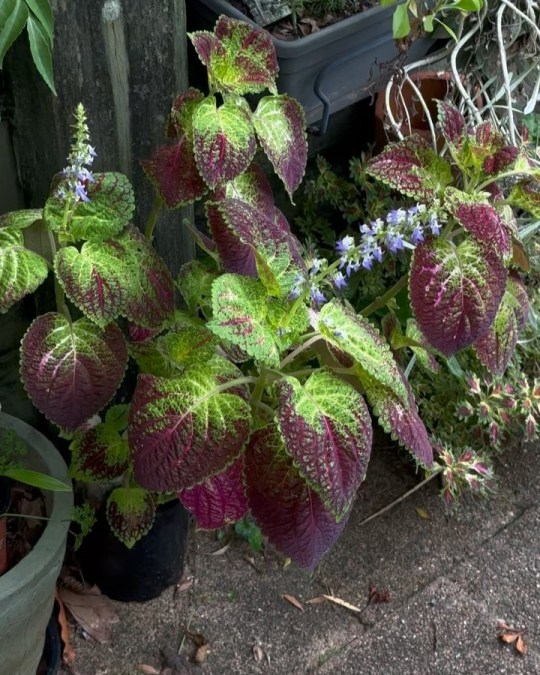
Now in flower and ready for a cut back is this lovely big Coleus (coleus scutellarioides) (also sometimes called plectranthus or solenostemon scutellarioides) also known as painted nettle. Coleus are native to southeast Asia through to Australia. This is a cutting I picked up over a year ago. It’s already grown out of the bottom of its pot! It’s possible to grow them from seed but if you want to know what you’re getting it’s better to take a cutting. They strike quite readily in water or in a damp sandy mix. #foliage #coleus #ColeusScutellarioides #asia #potplant #abcmygarden #outdoor #multicolour #hardy #waterwise #PaintedNettle (at Belmont, New South Wales, Australia) https://www.instagram.com/p/CqCpiBkvOH8/?igshid=NGJjMDIxMWI=
#foliage#coleus#coleusscutellarioides#asia#potplant#abcmygarden#outdoor#multicolour#hardy#waterwise#paintednettle
4 notes
·
View notes
Photo

Hi GPODers! Today a contributor has answered our call for summer color with a collection of blooms in just about every shade imaginable. Hugh Locke in New York has shared some seriously colorful photos in his previous submissions (Hugh’s Celebration of Annuals From Seed, Some Plants Worth Growing, Close-ups in Hugh’s Garden, etc.), many of which are his stunning ‘flower portraits’ that he also shares regularly on his Instagram (@hugh.locke). In this submission he’s diving deep into an absolutely impressive border he created last summer: I created a vibrant 80-foot-long flower border in Westchester with an array of annuals and perennials, the majority of which I grow from seed. The photos here are from last summer. My approach is based on the classic English flower border that mixes colors and textures with a gradation of height from front to back. It is also deep enough to accommodate a wide variety of flowers that are positioned to ensure a continuous show all season long. One of the highlights of last summer was this orange and yellow snapdragon (Antirrhinum majus ‘Potomac Orange’, annual) that was grown from seed and rebloomed on cue. Part of the fun is putting different flowers together to see what happens. Here the experiment worked out with a purple blue dwarf ‘Aloha Blue’ ageratum (Ageratum houstonianum ‘Aloha Blue’) (Ageratum houstonianum ‘Aloha Blue’, annual) that bloomed continuously until frost. The zinnias were similarly in full bloom until frost, from left to right: ‘Profusion Double Hot Cherry’, ‘Profusion Double Deep Salmon’, ‘Zahara Starlight Rose’, and Profusion Apricot’. The focal point of a different section of the border is ‘Musifolia’ canna (Canna ‘Musifolia’, Zones 7–10). This is the world’s tallest known variety, which topped out last summer at 8 feet tall. While it has modest red blooms late in the season, the leaves are its best feature. White flowers can sometimes get lost, but these two stand out against a hedge and some canna: Culver’s root (Veronicastrum virginicum, Zones 3–8) on the left and woodland tobacco (Nicotiana sylvestris, Zones 10–11 or as an annual) with its fireworks of trumpet flowers on the right. Hugh has been experimenting with coleus, with this variety a clear winner ‘Colocha Rose’ coleus (Plectranthus scutellarioides ‘Colocha Rose’, Zones 10–11 or as an annual) when grown next to ‘Profusion Apricot’ zinnias. This image shows off the range of colors and textures to maximum effect. Pink cosmos (Cosmos bipinnatus ‘Rosetta’, annual) and blue salvia (Salvia farinacea ‘Victoria Blue’, Zones 8–10 or as an annual) are in front of striking yellow goldenrod (Solidago), next to which is lacy white yarrow (Achillea millefolium, Zones 3–9)… all grown from seed, with the perennials now a few years old. ‘Casa Blanca’ Oriental lilies (Lilium ‘Casa Blanca’, Zones 5–8) steal the show, with a backdrop of violet cleome (Cleome hassleriana ‘Violet Queen’, annual). To the right are perennial Shasta daisies (Leucanthemum ‘Madonna’, Zones 3–9) grown from seed last spring and happily flowering their first year out. Yet another section of the border is dominated by this giant castor bean (Ricinus communis ‘Zanzibariensis’, Zones 9–11 or as an annual). An annual grown from seed, this tropical beauty eventually reached 14 feet by the end of the season. At that point the stem was the diameter of a small tree trunk and digging up the deep root system was a major undertaking. This celosia (Celosia plumosa ‘Yachiyo Hiryu’, annual) was a new addition last year and is now on the permanent list of annuals. Each year I starts seeds indoors under lights, beginning in February. While most are annuals, each year there are a few perennials (some of which admittedly take two years to put on a show of flowers). Last spring the result was close just over 350 plants in 4 inch pots ready for transplanting. Here are just a few examples of the closeup flower portraits from my garden you can see on my Instagram. Thank you so much for another memorable submission, Hugh! As many of us look out into gray, white, and brown landscapes of winter, your plant portraits and colorful garden combinations are a much-needed reminder of the warmth and color that awaits us later in the year. Have a garden you’d like to share? Have photos to share? We’d love to see your garden, a particular collection of plants you love, or a wonderful garden you had the chance to visit! To submit, send 5-10 photos to [email protected] along with some information about the plants in the pictures and where you took the photos. We’d love to hear where you are located, how long you’ve been gardening, successes you are proud of, failures you learned from, hopes for the future, favorite plants, or funny stories from your garden. Have a mobile phone? Tag your photos on Facebook, Instagram or Twitter with #FineGardening! Do you receive the GPOD by email yet? Sign up here. Fine Gardening Recommended Products Planting in a Post-Wild World: Designing Plant Communities for Resilient Landscapes Fine Gardening receives a commission for items purchased through links on this site, including Amazon Associates and other affiliate advertising programs. Featuring gorgeous photography and advice for landscapers, Planting in a Post-Wild World by Thomas Rainer and Claudia West is dedicated to the idea of a new nature—a hybrid of both the wild and the cultivated—that can nourish in our cities and suburbs. Attracting Beneficial Bugs to Your Garden, Revised and Updated Second Edition: A Natural Approach to Pest Control Fine Gardening receives a commission for items purchased through links on this site, including Amazon Associates and other affiliate advertising programs. This revised and updated edition of Jessica Walliser’s award-winning Attracting Beneficial Bugs to Your Garden offers a valuable and science-backed plan for bringing balance back to the garden. With this indispensable gardening reference—now updated with new research, insights, and voices—learn how to create a healthy, balanced, and diverse garden capable of supporting a hard-working crew of beneficial pest-eating insects and eliminate the need for synthetic chemical pesticides. The Crevice Garden: How to make the perfect home for plants from rocky places Fine Gardening receives a commission for items purchased through links on this site, including Amazon Associates and other affiliate advertising programs. A crevice garden replicates the environmental conditions of mountain tops, deserts, coastlines, and other exposed or rocky places on earth. These striking garden features provide perfect conditions for the plants native to these far-off places, bringing the cultivation of these precious gems within everybody’s reach. Source link
0 notes
Photo

Hi GPODers! Today a contributor has answered our call for summer color with a collection of blooms in just about every shade imaginable. Hugh Locke in New York has shared some seriously colorful photos in his previous submissions (Hugh’s Celebration of Annuals From Seed, Some Plants Worth Growing, Close-ups in Hugh’s Garden, etc.), many of which are his stunning ‘flower portraits’ that he also shares regularly on his Instagram (@hugh.locke). In this submission he’s diving deep into an absolutely impressive border he created last summer: I created a vibrant 80-foot-long flower border in Westchester with an array of annuals and perennials, the majority of which I grow from seed. The photos here are from last summer. My approach is based on the classic English flower border that mixes colors and textures with a gradation of height from front to back. It is also deep enough to accommodate a wide variety of flowers that are positioned to ensure a continuous show all season long. One of the highlights of last summer was this orange and yellow snapdragon (Antirrhinum majus ‘Potomac Orange’, annual) that was grown from seed and rebloomed on cue. Part of the fun is putting different flowers together to see what happens. Here the experiment worked out with a purple blue dwarf ‘Aloha Blue’ ageratum (Ageratum houstonianum ‘Aloha Blue’) (Ageratum houstonianum ‘Aloha Blue’, annual) that bloomed continuously until frost. The zinnias were similarly in full bloom until frost, from left to right: ‘Profusion Double Hot Cherry’, ‘Profusion Double Deep Salmon’, ‘Zahara Starlight Rose’, and Profusion Apricot’. The focal point of a different section of the border is ‘Musifolia’ canna (Canna ‘Musifolia’, Zones 7–10). This is the world’s tallest known variety, which topped out last summer at 8 feet tall. While it has modest red blooms late in the season, the leaves are its best feature. White flowers can sometimes get lost, but these two stand out against a hedge and some canna: Culver’s root (Veronicastrum virginicum, Zones 3–8) on the left and woodland tobacco (Nicotiana sylvestris, Zones 10–11 or as an annual) with its fireworks of trumpet flowers on the right. Hugh has been experimenting with coleus, with this variety a clear winner ‘Colocha Rose’ coleus (Plectranthus scutellarioides ‘Colocha Rose’, Zones 10–11 or as an annual) when grown next to ‘Profusion Apricot’ zinnias. This image shows off the range of colors and textures to maximum effect. Pink cosmos (Cosmos bipinnatus ‘Rosetta’, annual) and blue salvia (Salvia farinacea ‘Victoria Blue’, Zones 8–10 or as an annual) are in front of striking yellow goldenrod (Solidago), next to which is lacy white yarrow (Achillea millefolium, Zones 3–9)… all grown from seed, with the perennials now a few years old. ‘Casa Blanca’ Oriental lilies (Lilium ‘Casa Blanca’, Zones 5–8) steal the show, with a backdrop of violet cleome (Cleome hassleriana ‘Violet Queen’, annual). To the right are perennial Shasta daisies (Leucanthemum ‘Madonna’, Zones 3–9) grown from seed last spring and happily flowering their first year out. Yet another section of the border is dominated by this giant castor bean (Ricinus communis ‘Zanzibariensis’, Zones 9–11 or as an annual). An annual grown from seed, this tropical beauty eventually reached 14 feet by the end of the season. At that point the stem was the diameter of a small tree trunk and digging up the deep root system was a major undertaking. This celosia (Celosia plumosa ‘Yachiyo Hiryu’, annual) was a new addition last year and is now on the permanent list of annuals. Each year I starts seeds indoors under lights, beginning in February. While most are annuals, each year there are a few perennials (some of which admittedly take two years to put on a show of flowers). Last spring the result was close just over 350 plants in 4 inch pots ready for transplanting. Here are just a few examples of the closeup flower portraits from my garden you can see on my Instagram. Thank you so much for another memorable submission, Hugh! As many of us look out into gray, white, and brown landscapes of winter, your plant portraits and colorful garden combinations are a much-needed reminder of the warmth and color that awaits us later in the year. Have a garden you’d like to share? Have photos to share? We’d love to see your garden, a particular collection of plants you love, or a wonderful garden you had the chance to visit! To submit, send 5-10 photos to [email protected] along with some information about the plants in the pictures and where you took the photos. We’d love to hear where you are located, how long you’ve been gardening, successes you are proud of, failures you learned from, hopes for the future, favorite plants, or funny stories from your garden. Have a mobile phone? Tag your photos on Facebook, Instagram or Twitter with #FineGardening! Do you receive the GPOD by email yet? Sign up here. Fine Gardening Recommended Products Planting in a Post-Wild World: Designing Plant Communities for Resilient Landscapes Fine Gardening receives a commission for items purchased through links on this site, including Amazon Associates and other affiliate advertising programs. Featuring gorgeous photography and advice for landscapers, Planting in a Post-Wild World by Thomas Rainer and Claudia West is dedicated to the idea of a new nature—a hybrid of both the wild and the cultivated—that can nourish in our cities and suburbs. Attracting Beneficial Bugs to Your Garden, Revised and Updated Second Edition: A Natural Approach to Pest Control Fine Gardening receives a commission for items purchased through links on this site, including Amazon Associates and other affiliate advertising programs. This revised and updated edition of Jessica Walliser’s award-winning Attracting Beneficial Bugs to Your Garden offers a valuable and science-backed plan for bringing balance back to the garden. With this indispensable gardening reference—now updated with new research, insights, and voices—learn how to create a healthy, balanced, and diverse garden capable of supporting a hard-working crew of beneficial pest-eating insects and eliminate the need for synthetic chemical pesticides. The Crevice Garden: How to make the perfect home for plants from rocky places Fine Gardening receives a commission for items purchased through links on this site, including Amazon Associates and other affiliate advertising programs. A crevice garden replicates the environmental conditions of mountain tops, deserts, coastlines, and other exposed or rocky places on earth. These striking garden features provide perfect conditions for the plants native to these far-off places, bringing the cultivation of these precious gems within everybody’s reach. Source link
0 notes
Photo

Hi GPODers! Today a contributor has answered our call for summer color with a collection of blooms in just about every shade imaginable. Hugh Locke in New York has shared some seriously colorful photos in his previous submissions (Hugh’s Celebration of Annuals From Seed, Some Plants Worth Growing, Close-ups in Hugh’s Garden, etc.), many of which are his stunning ‘flower portraits’ that he also shares regularly on his Instagram (@hugh.locke). In this submission he’s diving deep into an absolutely impressive border he created last summer: I created a vibrant 80-foot-long flower border in Westchester with an array of annuals and perennials, the majority of which I grow from seed. The photos here are from last summer. My approach is based on the classic English flower border that mixes colors and textures with a gradation of height from front to back. It is also deep enough to accommodate a wide variety of flowers that are positioned to ensure a continuous show all season long. One of the highlights of last summer was this orange and yellow snapdragon (Antirrhinum majus ‘Potomac Orange’, annual) that was grown from seed and rebloomed on cue. Part of the fun is putting different flowers together to see what happens. Here the experiment worked out with a purple blue dwarf ‘Aloha Blue’ ageratum (Ageratum houstonianum ‘Aloha Blue’) (Ageratum houstonianum ‘Aloha Blue’, annual) that bloomed continuously until frost. The zinnias were similarly in full bloom until frost, from left to right: ‘Profusion Double Hot Cherry’, ‘Profusion Double Deep Salmon’, ‘Zahara Starlight Rose’, and Profusion Apricot’. The focal point of a different section of the border is ‘Musifolia’ canna (Canna ‘Musifolia’, Zones 7–10). This is the world’s tallest known variety, which topped out last summer at 8 feet tall. While it has modest red blooms late in the season, the leaves are its best feature. White flowers can sometimes get lost, but these two stand out against a hedge and some canna: Culver’s root (Veronicastrum virginicum, Zones 3–8) on the left and woodland tobacco (Nicotiana sylvestris, Zones 10–11 or as an annual) with its fireworks of trumpet flowers on the right. Hugh has been experimenting with coleus, with this variety a clear winner ‘Colocha Rose’ coleus (Plectranthus scutellarioides ‘Colocha Rose’, Zones 10–11 or as an annual) when grown next to ‘Profusion Apricot’ zinnias. This image shows off the range of colors and textures to maximum effect. Pink cosmos (Cosmos bipinnatus ‘Rosetta’, annual) and blue salvia (Salvia farinacea ‘Victoria Blue’, Zones 8–10 or as an annual) are in front of striking yellow goldenrod (Solidago), next to which is lacy white yarrow (Achillea millefolium, Zones 3–9)… all grown from seed, with the perennials now a few years old. ‘Casa Blanca’ Oriental lilies (Lilium ‘Casa Blanca’, Zones 5–8) steal the show, with a backdrop of violet cleome (Cleome hassleriana ‘Violet Queen’, annual). To the right are perennial Shasta daisies (Leucanthemum ‘Madonna’, Zones 3–9) grown from seed last spring and happily flowering their first year out. Yet another section of the border is dominated by this giant castor bean (Ricinus communis ‘Zanzibariensis’, Zones 9–11 or as an annual). An annual grown from seed, this tropical beauty eventually reached 14 feet by the end of the season. At that point the stem was the diameter of a small tree trunk and digging up the deep root system was a major undertaking. This celosia (Celosia plumosa ‘Yachiyo Hiryu’, annual) was a new addition last year and is now on the permanent list of annuals. Each year I starts seeds indoors under lights, beginning in February. While most are annuals, each year there are a few perennials (some of which admittedly take two years to put on a show of flowers). Last spring the result was close just over 350 plants in 4 inch pots ready for transplanting. Here are just a few examples of the closeup flower portraits from my garden you can see on my Instagram. Thank you so much for another memorable submission, Hugh! As many of us look out into gray, white, and brown landscapes of winter, your plant portraits and colorful garden combinations are a much-needed reminder of the warmth and color that awaits us later in the year. Have a garden you’d like to share? Have photos to share? We’d love to see your garden, a particular collection of plants you love, or a wonderful garden you had the chance to visit! To submit, send 5-10 photos to [email protected] along with some information about the plants in the pictures and where you took the photos. We’d love to hear where you are located, how long you’ve been gardening, successes you are proud of, failures you learned from, hopes for the future, favorite plants, or funny stories from your garden. Have a mobile phone? Tag your photos on Facebook, Instagram or Twitter with #FineGardening! Do you receive the GPOD by email yet? Sign up here. Fine Gardening Recommended Products Planting in a Post-Wild World: Designing Plant Communities for Resilient Landscapes Fine Gardening receives a commission for items purchased through links on this site, including Amazon Associates and other affiliate advertising programs. Featuring gorgeous photography and advice for landscapers, Planting in a Post-Wild World by Thomas Rainer and Claudia West is dedicated to the idea of a new nature—a hybrid of both the wild and the cultivated—that can nourish in our cities and suburbs. Attracting Beneficial Bugs to Your Garden, Revised and Updated Second Edition: A Natural Approach to Pest Control Fine Gardening receives a commission for items purchased through links on this site, including Amazon Associates and other affiliate advertising programs. This revised and updated edition of Jessica Walliser’s award-winning Attracting Beneficial Bugs to Your Garden offers a valuable and science-backed plan for bringing balance back to the garden. With this indispensable gardening reference—now updated with new research, insights, and voices—learn how to create a healthy, balanced, and diverse garden capable of supporting a hard-working crew of beneficial pest-eating insects and eliminate the need for synthetic chemical pesticides. The Crevice Garden: How to make the perfect home for plants from rocky places Fine Gardening receives a commission for items purchased through links on this site, including Amazon Associates and other affiliate advertising programs. A crevice garden replicates the environmental conditions of mountain tops, deserts, coastlines, and other exposed or rocky places on earth. These striking garden features provide perfect conditions for the plants native to these far-off places, bringing the cultivation of these precious gems within everybody’s reach. Source link
0 notes
Photo

Hi GPODers! Today a contributor has answered our call for summer color with a collection of blooms in just about every shade imaginable. Hugh Locke in New York has shared some seriously colorful photos in his previous submissions (Hugh’s Celebration of Annuals From Seed, Some Plants Worth Growing, Close-ups in Hugh’s Garden, etc.), many of which are his stunning ‘flower portraits’ that he also shares regularly on his Instagram (@hugh.locke). In this submission he’s diving deep into an absolutely impressive border he created last summer: I created a vibrant 80-foot-long flower border in Westchester with an array of annuals and perennials, the majority of which I grow from seed. The photos here are from last summer. My approach is based on the classic English flower border that mixes colors and textures with a gradation of height from front to back. It is also deep enough to accommodate a wide variety of flowers that are positioned to ensure a continuous show all season long. One of the highlights of last summer was this orange and yellow snapdragon (Antirrhinum majus ‘Potomac Orange’, annual) that was grown from seed and rebloomed on cue. Part of the fun is putting different flowers together to see what happens. Here the experiment worked out with a purple blue dwarf ‘Aloha Blue’ ageratum (Ageratum houstonianum ‘Aloha Blue’) (Ageratum houstonianum ‘Aloha Blue’, annual) that bloomed continuously until frost. The zinnias were similarly in full bloom until frost, from left to right: ‘Profusion Double Hot Cherry’, ‘Profusion Double Deep Salmon’, ‘Zahara Starlight Rose’, and Profusion Apricot’. The focal point of a different section of the border is ‘Musifolia’ canna (Canna ‘Musifolia’, Zones 7–10). This is the world’s tallest known variety, which topped out last summer at 8 feet tall. While it has modest red blooms late in the season, the leaves are its best feature. White flowers can sometimes get lost, but these two stand out against a hedge and some canna: Culver’s root (Veronicastrum virginicum, Zones 3–8) on the left and woodland tobacco (Nicotiana sylvestris, Zones 10–11 or as an annual) with its fireworks of trumpet flowers on the right. Hugh has been experimenting with coleus, with this variety a clear winner ‘Colocha Rose’ coleus (Plectranthus scutellarioides ‘Colocha Rose’, Zones 10–11 or as an annual) when grown next to ‘Profusion Apricot’ zinnias. This image shows off the range of colors and textures to maximum effect. Pink cosmos (Cosmos bipinnatus ‘Rosetta’, annual) and blue salvia (Salvia farinacea ‘Victoria Blue’, Zones 8–10 or as an annual) are in front of striking yellow goldenrod (Solidago), next to which is lacy white yarrow (Achillea millefolium, Zones 3–9)… all grown from seed, with the perennials now a few years old. ‘Casa Blanca’ Oriental lilies (Lilium ‘Casa Blanca’, Zones 5–8) steal the show, with a backdrop of violet cleome (Cleome hassleriana ‘Violet Queen’, annual). To the right are perennial Shasta daisies (Leucanthemum ‘Madonna’, Zones 3–9) grown from seed last spring and happily flowering their first year out. Yet another section of the border is dominated by this giant castor bean (Ricinus communis ‘Zanzibariensis’, Zones 9–11 or as an annual). An annual grown from seed, this tropical beauty eventually reached 14 feet by the end of the season. At that point the stem was the diameter of a small tree trunk and digging up the deep root system was a major undertaking. This celosia (Celosia plumosa ‘Yachiyo Hiryu’, annual) was a new addition last year and is now on the permanent list of annuals. Each year I starts seeds indoors under lights, beginning in February. While most are annuals, each year there are a few perennials (some of which admittedly take two years to put on a show of flowers). Last spring the result was close just over 350 plants in 4 inch pots ready for transplanting. Here are just a few examples of the closeup flower portraits from my garden you can see on my Instagram. Thank you so much for another memorable submission, Hugh! As many of us look out into gray, white, and brown landscapes of winter, your plant portraits and colorful garden combinations are a much-needed reminder of the warmth and color that awaits us later in the year. Have a garden you’d like to share? Have photos to share? We’d love to see your garden, a particular collection of plants you love, or a wonderful garden you had the chance to visit! To submit, send 5-10 photos to [email protected] along with some information about the plants in the pictures and where you took the photos. We’d love to hear where you are located, how long you’ve been gardening, successes you are proud of, failures you learned from, hopes for the future, favorite plants, or funny stories from your garden. Have a mobile phone? Tag your photos on Facebook, Instagram or Twitter with #FineGardening! Do you receive the GPOD by email yet? Sign up here. Fine Gardening Recommended Products Planting in a Post-Wild World: Designing Plant Communities for Resilient Landscapes Fine Gardening receives a commission for items purchased through links on this site, including Amazon Associates and other affiliate advertising programs. Featuring gorgeous photography and advice for landscapers, Planting in a Post-Wild World by Thomas Rainer and Claudia West is dedicated to the idea of a new nature—a hybrid of both the wild and the cultivated—that can nourish in our cities and suburbs. Attracting Beneficial Bugs to Your Garden, Revised and Updated Second Edition: A Natural Approach to Pest Control Fine Gardening receives a commission for items purchased through links on this site, including Amazon Associates and other affiliate advertising programs. This revised and updated edition of Jessica Walliser’s award-winning Attracting Beneficial Bugs to Your Garden offers a valuable and science-backed plan for bringing balance back to the garden. With this indispensable gardening reference—now updated with new research, insights, and voices—learn how to create a healthy, balanced, and diverse garden capable of supporting a hard-working crew of beneficial pest-eating insects and eliminate the need for synthetic chemical pesticides. The Crevice Garden: How to make the perfect home for plants from rocky places Fine Gardening receives a commission for items purchased through links on this site, including Amazon Associates and other affiliate advertising programs. A crevice garden replicates the environmental conditions of mountain tops, deserts, coastlines, and other exposed or rocky places on earth. These striking garden features provide perfect conditions for the plants native to these far-off places, bringing the cultivation of these precious gems within everybody’s reach. Source link
0 notes
Photo

Hi GPODers! Today a contributor has answered our call for summer color with a collection of blooms in just about every shade imaginable. Hugh Locke in New York has shared some seriously colorful photos in his previous submissions (Hugh’s Celebration of Annuals From Seed, Some Plants Worth Growing, Close-ups in Hugh’s Garden, etc.), many of which are his stunning ‘flower portraits’ that he also shares regularly on his Instagram (@hugh.locke). In this submission he’s diving deep into an absolutely impressive border he created last summer: I created a vibrant 80-foot-long flower border in Westchester with an array of annuals and perennials, the majority of which I grow from seed. The photos here are from last summer. My approach is based on the classic English flower border that mixes colors and textures with a gradation of height from front to back. It is also deep enough to accommodate a wide variety of flowers that are positioned to ensure a continuous show all season long. One of the highlights of last summer was this orange and yellow snapdragon (Antirrhinum majus ‘Potomac Orange’, annual) that was grown from seed and rebloomed on cue. Part of the fun is putting different flowers together to see what happens. Here the experiment worked out with a purple blue dwarf ‘Aloha Blue’ ageratum (Ageratum houstonianum ‘Aloha Blue’) (Ageratum houstonianum ‘Aloha Blue’, annual) that bloomed continuously until frost. The zinnias were similarly in full bloom until frost, from left to right: ‘Profusion Double Hot Cherry’, ‘Profusion Double Deep Salmon’, ‘Zahara Starlight Rose’, and Profusion Apricot’. The focal point of a different section of the border is ‘Musifolia’ canna (Canna ‘Musifolia’, Zones 7–10). This is the world’s tallest known variety, which topped out last summer at 8 feet tall. While it has modest red blooms late in the season, the leaves are its best feature. White flowers can sometimes get lost, but these two stand out against a hedge and some canna: Culver’s root (Veronicastrum virginicum, Zones 3–8) on the left and woodland tobacco (Nicotiana sylvestris, Zones 10–11 or as an annual) with its fireworks of trumpet flowers on the right. Hugh has been experimenting with coleus, with this variety a clear winner ‘Colocha Rose’ coleus (Plectranthus scutellarioides ‘Colocha Rose’, Zones 10–11 or as an annual) when grown next to ‘Profusion Apricot’ zinnias. This image shows off the range of colors and textures to maximum effect. Pink cosmos (Cosmos bipinnatus ‘Rosetta’, annual) and blue salvia (Salvia farinacea ‘Victoria Blue’, Zones 8–10 or as an annual) are in front of striking yellow goldenrod (Solidago), next to which is lacy white yarrow (Achillea millefolium, Zones 3–9)… all grown from seed, with the perennials now a few years old. ‘Casa Blanca’ Oriental lilies (Lilium ‘Casa Blanca’, Zones 5–8) steal the show, with a backdrop of violet cleome (Cleome hassleriana ‘Violet Queen’, annual). To the right are perennial Shasta daisies (Leucanthemum ‘Madonna’, Zones 3–9) grown from seed last spring and happily flowering their first year out. Yet another section of the border is dominated by this giant castor bean (Ricinus communis ‘Zanzibariensis’, Zones 9–11 or as an annual). An annual grown from seed, this tropical beauty eventually reached 14 feet by the end of the season. At that point the stem was the diameter of a small tree trunk and digging up the deep root system was a major undertaking. This celosia (Celosia plumosa ‘Yachiyo Hiryu’, annual) was a new addition last year and is now on the permanent list of annuals. Each year I starts seeds indoors under lights, beginning in February. While most are annuals, each year there are a few perennials (some of which admittedly take two years to put on a show of flowers). Last spring the result was close just over 350 plants in 4 inch pots ready for transplanting. Here are just a few examples of the closeup flower portraits from my garden you can see on my Instagram. Thank you so much for another memorable submission, Hugh! As many of us look out into gray, white, and brown landscapes of winter, your plant portraits and colorful garden combinations are a much-needed reminder of the warmth and color that awaits us later in the year. Have a garden you’d like to share? Have photos to share? We’d love to see your garden, a particular collection of plants you love, or a wonderful garden you had the chance to visit! To submit, send 5-10 photos to [email protected] along with some information about the plants in the pictures and where you took the photos. We’d love to hear where you are located, how long you’ve been gardening, successes you are proud of, failures you learned from, hopes for the future, favorite plants, or funny stories from your garden. Have a mobile phone? Tag your photos on Facebook, Instagram or Twitter with #FineGardening! Do you receive the GPOD by email yet? Sign up here. Fine Gardening Recommended Products Planting in a Post-Wild World: Designing Plant Communities for Resilient Landscapes Fine Gardening receives a commission for items purchased through links on this site, including Amazon Associates and other affiliate advertising programs. Featuring gorgeous photography and advice for landscapers, Planting in a Post-Wild World by Thomas Rainer and Claudia West is dedicated to the idea of a new nature—a hybrid of both the wild and the cultivated—that can nourish in our cities and suburbs. Attracting Beneficial Bugs to Your Garden, Revised and Updated Second Edition: A Natural Approach to Pest Control Fine Gardening receives a commission for items purchased through links on this site, including Amazon Associates and other affiliate advertising programs. This revised and updated edition of Jessica Walliser’s award-winning Attracting Beneficial Bugs to Your Garden offers a valuable and science-backed plan for bringing balance back to the garden. With this indispensable gardening reference—now updated with new research, insights, and voices—learn how to create a healthy, balanced, and diverse garden capable of supporting a hard-working crew of beneficial pest-eating insects and eliminate the need for synthetic chemical pesticides. The Crevice Garden: How to make the perfect home for plants from rocky places Fine Gardening receives a commission for items purchased through links on this site, including Amazon Associates and other affiliate advertising programs. A crevice garden replicates the environmental conditions of mountain tops, deserts, coastlines, and other exposed or rocky places on earth. These striking garden features provide perfect conditions for the plants native to these far-off places, bringing the cultivation of these precious gems within everybody’s reach. Source link
0 notes
Text
A Painter’s Nettles

Painted Nettle (Plectranthus [formerly Solenostemon] scutellarioides) decorating a quieter part of the Gardens by the Bay. Photo credit: Jonathan Chua.
#photographers on tumblr#coleus#flora fauna#flora photography#flower pics#nikon photography#nikon zfc#painted nettle#Plectranthus (formerly Solenostemon) scutellarioides#tamron 16-300mm
20 notes
·
View notes
Text

Coleus scutellarioides 'Inferno' / 'Inferno' Coleus at the Sarah P. Duke Gardens at Duke University in Durham, NC
#Coleus scutellarioides 'Inferno'#Coleus scutellarioides#Coleus#Inferno coleus#Foliage#Flowers#Nature photography#photographers on tumblr#Sarah P. Duke Gardens#Duke Gardens#Duke University#Durham#Durham NC#North Carolina
0 notes
Photo

Hi GPODers! Today a contributor has answered our call for summer color with a collection of blooms in just about every shade imaginable. Hugh Locke in New York has shared some seriously colorful photos in his previous submissions (Hugh’s Celebration of Annuals From Seed, Some Plants Worth Growing, Close-ups in Hugh’s Garden, etc.), many of which are his stunning ‘flower portraits’ that he also shares regularly on his Instagram (@hugh.locke). In this submission he’s diving deep into an absolutely impressive border he created last summer: I created a vibrant 80-foot-long flower border in Westchester with an array of annuals and perennials, the majority of which I grow from seed. The photos here are from last summer. My approach is based on the classic English flower border that mixes colors and textures with a gradation of height from front to back. It is also deep enough to accommodate a wide variety of flowers that are positioned to ensure a continuous show all season long. One of the highlights of last summer was this orange and yellow snapdragon (Antirrhinum majus ‘Potomac Orange’, annual) that was grown from seed and rebloomed on cue. Part of the fun is putting different flowers together to see what happens. Here the experiment worked out with a purple blue dwarf ‘Aloha Blue’ ageratum (Ageratum houstonianum ‘Aloha Blue’) (Ageratum houstonianum ‘Aloha Blue’, annual) that bloomed continuously until frost. The zinnias were similarly in full bloom until frost, from left to right: ‘Profusion Double Hot Cherry’, ‘Profusion Double Deep Salmon’, ‘Zahara Starlight Rose’, and Profusion Apricot’. The focal point of a different section of the border is ‘Musifolia’ canna (Canna ‘Musifolia’, Zones 7–10). This is the world’s tallest known variety, which topped out last summer at 8 feet tall. While it has modest red blooms late in the season, the leaves are its best feature. White flowers can sometimes get lost, but these two stand out against a hedge and some canna: Culver’s root (Veronicastrum virginicum, Zones 3–8) on the left and woodland tobacco (Nicotiana sylvestris, Zones 10–11 or as an annual) with its fireworks of trumpet flowers on the right. Hugh has been experimenting with coleus, with this variety a clear winner ‘Colocha Rose’ coleus (Plectranthus scutellarioides ‘Colocha Rose’, Zones 10–11 or as an annual) when grown next to ‘Profusion Apricot’ zinnias. This image shows off the range of colors and textures to maximum effect. Pink cosmos (Cosmos bipinnatus ‘Rosetta’, annual) and blue salvia (Salvia farinacea ‘Victoria Blue’, Zones 8–10 or as an annual) are in front of striking yellow goldenrod (Solidago), next to which is lacy white yarrow (Achillea millefolium, Zones 3–9)… all grown from seed, with the perennials now a few years old. ‘Casa Blanca’ Oriental lilies (Lilium ‘Casa Blanca’, Zones 5–8) steal the show, with a backdrop of violet cleome (Cleome hassleriana ‘Violet Queen’, annual). To the right are perennial Shasta daisies (Leucanthemum ‘Madonna’, Zones 3–9) grown from seed last spring and happily flowering their first year out. Yet another section of the border is dominated by this giant castor bean (Ricinus communis ‘Zanzibariensis’, Zones 9–11 or as an annual). An annual grown from seed, this tropical beauty eventually reached 14 feet by the end of the season. At that point the stem was the diameter of a small tree trunk and digging up the deep root system was a major undertaking. This celosia (Celosia plumosa ‘Yachiyo Hiryu’, annual) was a new addition last year and is now on the permanent list of annuals. Each year I starts seeds indoors under lights, beginning in February. While most are annuals, each year there are a few perennials (some of which admittedly take two years to put on a show of flowers). Last spring the result was close just over 350 plants in 4 inch pots ready for transplanting. Here are just a few examples of the closeup flower portraits from my garden you can see on my Instagram. Thank you so much for another memorable submission, Hugh! As many of us look out into gray, white, and brown landscapes of winter, your plant portraits and colorful garden combinations are a much-needed reminder of the warmth and color that awaits us later in the year. Have a garden you’d like to share? Have photos to share? We’d love to see your garden, a particular collection of plants you love, or a wonderful garden you had the chance to visit! To submit, send 5-10 photos to [email protected] along with some information about the plants in the pictures and where you took the photos. We’d love to hear where you are located, how long you’ve been gardening, successes you are proud of, failures you learned from, hopes for the future, favorite plants, or funny stories from your garden. Have a mobile phone? Tag your photos on Facebook, Instagram or Twitter with #FineGardening! Do you receive the GPOD by email yet? Sign up here. Fine Gardening Recommended Products Planting in a Post-Wild World: Designing Plant Communities for Resilient Landscapes Fine Gardening receives a commission for items purchased through links on this site, including Amazon Associates and other affiliate advertising programs. Featuring gorgeous photography and advice for landscapers, Planting in a Post-Wild World by Thomas Rainer and Claudia West is dedicated to the idea of a new nature—a hybrid of both the wild and the cultivated—that can nourish in our cities and suburbs. Attracting Beneficial Bugs to Your Garden, Revised and Updated Second Edition: A Natural Approach to Pest Control Fine Gardening receives a commission for items purchased through links on this site, including Amazon Associates and other affiliate advertising programs. This revised and updated edition of Jessica Walliser’s award-winning Attracting Beneficial Bugs to Your Garden offers a valuable and science-backed plan for bringing balance back to the garden. With this indispensable gardening reference—now updated with new research, insights, and voices—learn how to create a healthy, balanced, and diverse garden capable of supporting a hard-working crew of beneficial pest-eating insects and eliminate the need for synthetic chemical pesticides. The Crevice Garden: How to make the perfect home for plants from rocky places Fine Gardening receives a commission for items purchased through links on this site, including Amazon Associates and other affiliate advertising programs. A crevice garden replicates the environmental conditions of mountain tops, deserts, coastlines, and other exposed or rocky places on earth. These striking garden features provide perfect conditions for the plants native to these far-off places, bringing the cultivation of these precious gems within everybody’s reach. Source link
0 notes
Photo

Hi GPODers! Today a contributor has answered our call for summer color with a collection of blooms in just about every shade imaginable. Hugh Locke in New York has shared some seriously colorful photos in his previous submissions (Hugh’s Celebration of Annuals From Seed, Some Plants Worth Growing, Close-ups in Hugh’s Garden, etc.), many of which are his stunning ‘flower portraits’ that he also shares regularly on his Instagram (@hugh.locke). In this submission he’s diving deep into an absolutely impressive border he created last summer: I created a vibrant 80-foot-long flower border in Westchester with an array of annuals and perennials, the majority of which I grow from seed. The photos here are from last summer. My approach is based on the classic English flower border that mixes colors and textures with a gradation of height from front to back. It is also deep enough to accommodate a wide variety of flowers that are positioned to ensure a continuous show all season long. One of the highlights of last summer was this orange and yellow snapdragon (Antirrhinum majus ‘Potomac Orange’, annual) that was grown from seed and rebloomed on cue. Part of the fun is putting different flowers together to see what happens. Here the experiment worked out with a purple blue dwarf ‘Aloha Blue’ ageratum (Ageratum houstonianum ‘Aloha Blue’) (Ageratum houstonianum ‘Aloha Blue’, annual) that bloomed continuously until frost. The zinnias were similarly in full bloom until frost, from left to right: ‘Profusion Double Hot Cherry’, ‘Profusion Double Deep Salmon’, ‘Zahara Starlight Rose’, and Profusion Apricot’. The focal point of a different section of the border is ‘Musifolia’ canna (Canna ‘Musifolia’, Zones 7–10). This is the world’s tallest known variety, which topped out last summer at 8 feet tall. While it has modest red blooms late in the season, the leaves are its best feature. White flowers can sometimes get lost, but these two stand out against a hedge and some canna: Culver’s root (Veronicastrum virginicum, Zones 3–8) on the left and woodland tobacco (Nicotiana sylvestris, Zones 10–11 or as an annual) with its fireworks of trumpet flowers on the right. Hugh has been experimenting with coleus, with this variety a clear winner ‘Colocha Rose’ coleus (Plectranthus scutellarioides ‘Colocha Rose’, Zones 10–11 or as an annual) when grown next to ‘Profusion Apricot’ zinnias. This image shows off the range of colors and textures to maximum effect. Pink cosmos (Cosmos bipinnatus ‘Rosetta’, annual) and blue salvia (Salvia farinacea ‘Victoria Blue’, Zones 8–10 or as an annual) are in front of striking yellow goldenrod (Solidago), next to which is lacy white yarrow (Achillea millefolium, Zones 3–9)… all grown from seed, with the perennials now a few years old. ‘Casa Blanca’ Oriental lilies (Lilium ‘Casa Blanca’, Zones 5–8) steal the show, with a backdrop of violet cleome (Cleome hassleriana ‘Violet Queen’, annual). To the right are perennial Shasta daisies (Leucanthemum ‘Madonna’, Zones 3–9) grown from seed last spring and happily flowering their first year out. Yet another section of the border is dominated by this giant castor bean (Ricinus communis ‘Zanzibariensis’, Zones 9–11 or as an annual). An annual grown from seed, this tropical beauty eventually reached 14 feet by the end of the season. At that point the stem was the diameter of a small tree trunk and digging up the deep root system was a major undertaking. This celosia (Celosia plumosa ‘Yachiyo Hiryu’, annual) was a new addition last year and is now on the permanent list of annuals. Each year I starts seeds indoors under lights, beginning in February. While most are annuals, each year there are a few perennials (some of which admittedly take two years to put on a show of flowers). Last spring the result was close just over 350 plants in 4 inch pots ready for transplanting. Here are just a few examples of the closeup flower portraits from my garden you can see on my Instagram. Thank you so much for another memorable submission, Hugh! As many of us look out into gray, white, and brown landscapes of winter, your plant portraits and colorful garden combinations are a much-needed reminder of the warmth and color that awaits us later in the year. Have a garden you’d like to share? Have photos to share? We’d love to see your garden, a particular collection of plants you love, or a wonderful garden you had the chance to visit! To submit, send 5-10 photos to [email protected] along with some information about the plants in the pictures and where you took the photos. We’d love to hear where you are located, how long you’ve been gardening, successes you are proud of, failures you learned from, hopes for the future, favorite plants, or funny stories from your garden. Have a mobile phone? Tag your photos on Facebook, Instagram or Twitter with #FineGardening! Do you receive the GPOD by email yet? Sign up here. Fine Gardening Recommended Products Planting in a Post-Wild World: Designing Plant Communities for Resilient Landscapes Fine Gardening receives a commission for items purchased through links on this site, including Amazon Associates and other affiliate advertising programs. Featuring gorgeous photography and advice for landscapers, Planting in a Post-Wild World by Thomas Rainer and Claudia West is dedicated to the idea of a new nature—a hybrid of both the wild and the cultivated—that can nourish in our cities and suburbs. Attracting Beneficial Bugs to Your Garden, Revised and Updated Second Edition: A Natural Approach to Pest Control Fine Gardening receives a commission for items purchased through links on this site, including Amazon Associates and other affiliate advertising programs. This revised and updated edition of Jessica Walliser’s award-winning Attracting Beneficial Bugs to Your Garden offers a valuable and science-backed plan for bringing balance back to the garden. With this indispensable gardening reference—now updated with new research, insights, and voices—learn how to create a healthy, balanced, and diverse garden capable of supporting a hard-working crew of beneficial pest-eating insects and eliminate the need for synthetic chemical pesticides. The Crevice Garden: How to make the perfect home for plants from rocky places Fine Gardening receives a commission for items purchased through links on this site, including Amazon Associates and other affiliate advertising programs. A crevice garden replicates the environmental conditions of mountain tops, deserts, coastlines, and other exposed or rocky places on earth. These striking garden features provide perfect conditions for the plants native to these far-off places, bringing the cultivation of these precious gems within everybody’s reach. Source link
0 notes
Photo

Hi GPODers! Today a contributor has answered our call for summer color with a collection of blooms in just about every shade imaginable. Hugh Locke in New York has shared some seriously colorful photos in his previous submissions (Hugh’s Celebration of Annuals From Seed, Some Plants Worth Growing, Close-ups in Hugh’s Garden, etc.), many of which are his stunning ‘flower portraits’ that he also shares regularly on his Instagram (@hugh.locke). In this submission he’s diving deep into an absolutely impressive border he created last summer: I created a vibrant 80-foot-long flower border in Westchester with an array of annuals and perennials, the majority of which I grow from seed. The photos here are from last summer. My approach is based on the classic English flower border that mixes colors and textures with a gradation of height from front to back. It is also deep enough to accommodate a wide variety of flowers that are positioned to ensure a continuous show all season long. One of the highlights of last summer was this orange and yellow snapdragon (Antirrhinum majus ‘Potomac Orange’, annual) that was grown from seed and rebloomed on cue. Part of the fun is putting different flowers together to see what happens. Here the experiment worked out with a purple blue dwarf ‘Aloha Blue’ ageratum (Ageratum houstonianum ‘Aloha Blue’) (Ageratum houstonianum ‘Aloha Blue’, annual) that bloomed continuously until frost. The zinnias were similarly in full bloom until frost, from left to right: ‘Profusion Double Hot Cherry’, ‘Profusion Double Deep Salmon’, ‘Zahara Starlight Rose’, and Profusion Apricot’. The focal point of a different section of the border is ‘Musifolia’ canna (Canna ‘Musifolia’, Zones 7–10). This is the world’s tallest known variety, which topped out last summer at 8 feet tall. While it has modest red blooms late in the season, the leaves are its best feature. White flowers can sometimes get lost, but these two stand out against a hedge and some canna: Culver’s root (Veronicastrum virginicum, Zones 3–8) on the left and woodland tobacco (Nicotiana sylvestris, Zones 10–11 or as an annual) with its fireworks of trumpet flowers on the right. Hugh has been experimenting with coleus, with this variety a clear winner ‘Colocha Rose’ coleus (Plectranthus scutellarioides ‘Colocha Rose’, Zones 10–11 or as an annual) when grown next to ‘Profusion Apricot’ zinnias. This image shows off the range of colors and textures to maximum effect. Pink cosmos (Cosmos bipinnatus ‘Rosetta’, annual) and blue salvia (Salvia farinacea ‘Victoria Blue’, Zones 8–10 or as an annual) are in front of striking yellow goldenrod (Solidago), next to which is lacy white yarrow (Achillea millefolium, Zones 3–9)… all grown from seed, with the perennials now a few years old. ‘Casa Blanca’ Oriental lilies (Lilium ‘Casa Blanca’, Zones 5–8) steal the show, with a backdrop of violet cleome (Cleome hassleriana ‘Violet Queen’, annual). To the right are perennial Shasta daisies (Leucanthemum ‘Madonna’, Zones 3–9) grown from seed last spring and happily flowering their first year out. Yet another section of the border is dominated by this giant castor bean (Ricinus communis ‘Zanzibariensis’, Zones 9–11 or as an annual). An annual grown from seed, this tropical beauty eventually reached 14 feet by the end of the season. At that point the stem was the diameter of a small tree trunk and digging up the deep root system was a major undertaking. This celosia (Celosia plumosa ‘Yachiyo Hiryu’, annual) was a new addition last year and is now on the permanent list of annuals. Each year I starts seeds indoors under lights, beginning in February. While most are annuals, each year there are a few perennials (some of which admittedly take two years to put on a show of flowers). Last spring the result was close just over 350 plants in 4 inch pots ready for transplanting. Here are just a few examples of the closeup flower portraits from my garden you can see on my Instagram. Thank you so much for another memorable submission, Hugh! As many of us look out into gray, white, and brown landscapes of winter, your plant portraits and colorful garden combinations are a much-needed reminder of the warmth and color that awaits us later in the year. Have a garden you’d like to share? Have photos to share? We’d love to see your garden, a particular collection of plants you love, or a wonderful garden you had the chance to visit! To submit, send 5-10 photos to [email protected] along with some information about the plants in the pictures and where you took the photos. We’d love to hear where you are located, how long you’ve been gardening, successes you are proud of, failures you learned from, hopes for the future, favorite plants, or funny stories from your garden. Have a mobile phone? Tag your photos on Facebook, Instagram or Twitter with #FineGardening! Do you receive the GPOD by email yet? Sign up here. Fine Gardening Recommended Products Planting in a Post-Wild World: Designing Plant Communities for Resilient Landscapes Fine Gardening receives a commission for items purchased through links on this site, including Amazon Associates and other affiliate advertising programs. Featuring gorgeous photography and advice for landscapers, Planting in a Post-Wild World by Thomas Rainer and Claudia West is dedicated to the idea of a new nature—a hybrid of both the wild and the cultivated—that can nourish in our cities and suburbs. Attracting Beneficial Bugs to Your Garden, Revised and Updated Second Edition: A Natural Approach to Pest Control Fine Gardening receives a commission for items purchased through links on this site, including Amazon Associates and other affiliate advertising programs. This revised and updated edition of Jessica Walliser’s award-winning Attracting Beneficial Bugs to Your Garden offers a valuable and science-backed plan for bringing balance back to the garden. With this indispensable gardening reference—now updated with new research, insights, and voices—learn how to create a healthy, balanced, and diverse garden capable of supporting a hard-working crew of beneficial pest-eating insects and eliminate the need for synthetic chemical pesticides. The Crevice Garden: How to make the perfect home for plants from rocky places Fine Gardening receives a commission for items purchased through links on this site, including Amazon Associates and other affiliate advertising programs. A crevice garden replicates the environmental conditions of mountain tops, deserts, coastlines, and other exposed or rocky places on earth. These striking garden features provide perfect conditions for the plants native to these far-off places, bringing the cultivation of these precious gems within everybody’s reach. Source link
0 notes